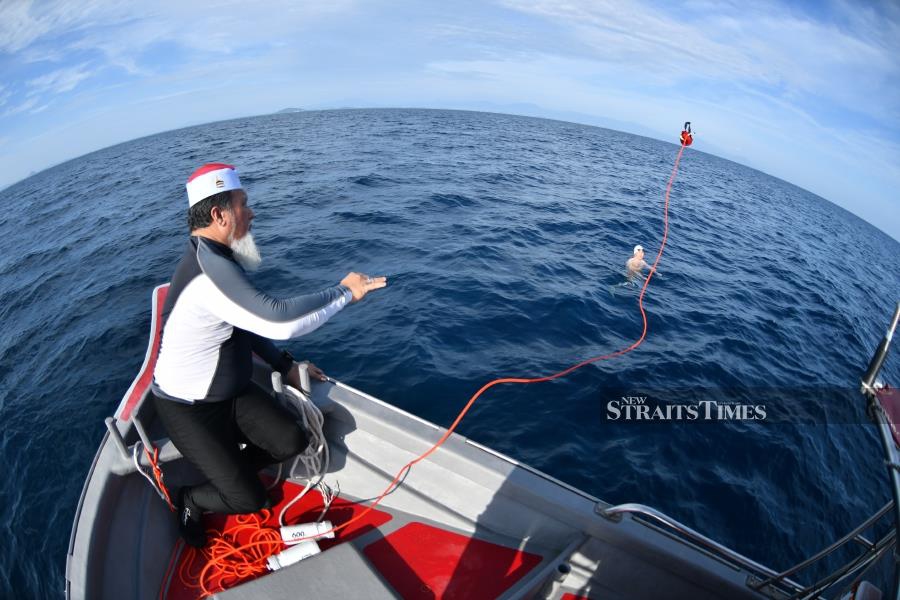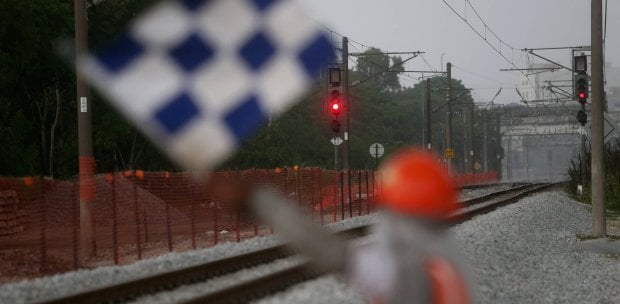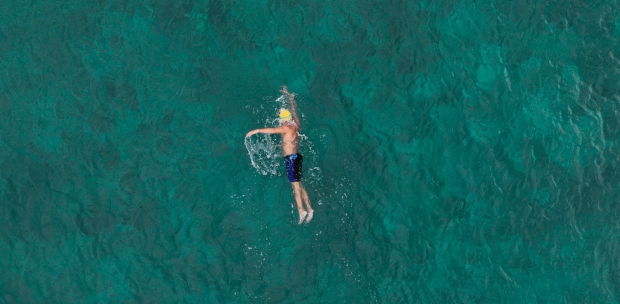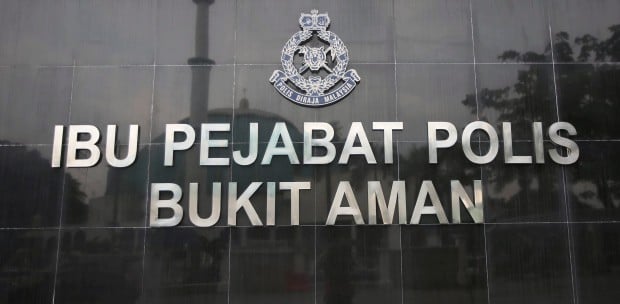LAST year, my team and I attempted a daring 25km swim from Pulau Redang to the Terengganu mainland. It had never been done before, but unfortunately, we didn't succeed. Recently, we tried again. Calling our project Redang Channel Solo Swim 2023, we gave our all and finally reaped success.
We began from the Pulau Redang Marine Park Centre at 9.15pm on June 24 and landed on Bari Beach in the mainland the next day at 5.57pm. Time taken: 20 hours, 42 minutes and 26 seconds.
This is a hard swim. Last year, my body cramped several times and I got stung by jellyfish twice. I didn't have enough mental fortitude and ended my attempt after 15 hours with an estimated 6km more to go. This year, I didn't experience any cramping at all. I had one jellyfish sting, but it was minor and required no medical attention.
That said, this year's swim was even harder. Throughout the 20 hours, the waters were calm only in the first hour at sunrise and the last hour of the swim. During feeding breaks, I had to tread higher in the water to avoid seawater from coming into my mouth and my feed. I had little respite.
And yet, despite the harsh conditions, we completed the swim. How did we do it?
CHANGE IN EXPECTATIONS

After last year's failure, we accepted the fact that this swim would be hard. The sea isn't a friendly place to be in. I credit Abdul Razak Abdul Aziz, our team leader last year, for making me believe that I could handle the swells of the Redang Channel. So, this year, even though the waves were just as formidable, I didn't complain and just got down to work.
We also changed our expectations regarding how long the swim would take. Last year, we thought we could reach shore after swimming no more than 30km. We were wrong. This year, we revised our expectations to between 35km and 40km. And true enough, we clocked 37.36km.
CHANGE IN TRAINING APPROACH

I was more relaxed this year. Instead of swimming hard, I kept my heart rate low and minimised energy use, even if it meant swimming at a slower pace. Away from the pool, I worked on improving my posture. When doing normal daily activities like driving, working at the computer or eating, I kept my shoulders down and my back straight.
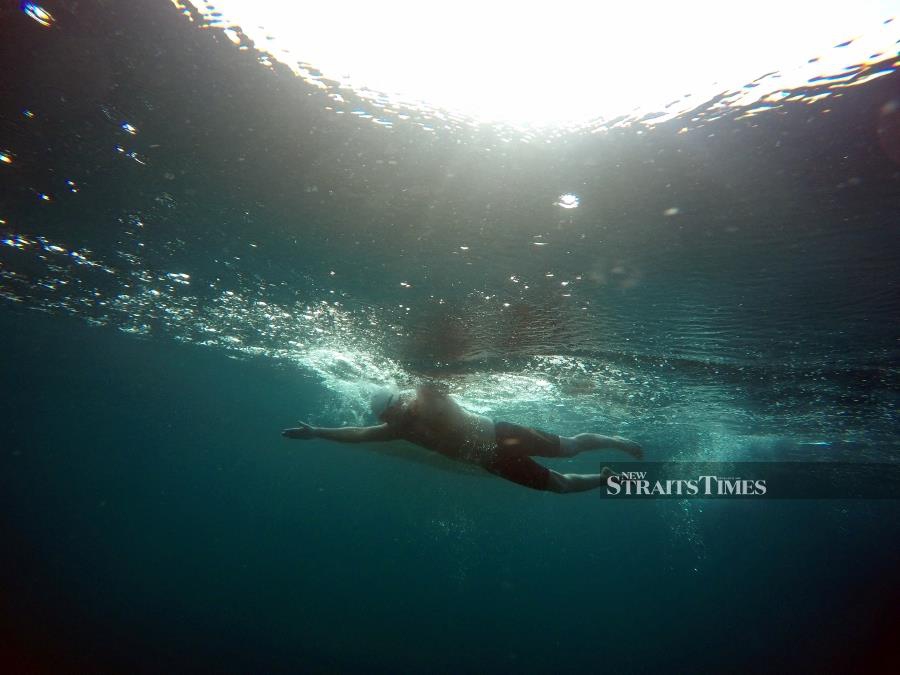
My swim training began in Ramadan, where I'd swim at 4am a few times a week to maintain fitness. As soon as Ramadan was over, the long weekend swims began in earnest. As with all previous swim projects, my coach Shauqie Aziz prepared the training plan. At its peak, Shauqie got me to do almost 18km in a single day.
This year's training plan was different. Instead of just freestyle swimming, we incorporated individual medley (IM) routines. I have been learning the four IM strokes from coach Angelia Ong (former national swimmer and sister of Malaysian swimming star Jeffrey Ong) since late last year. For this Pulau Redang training, Shauqie varied my training plan with plenty of kicking and water treading sets, as well as butterfly, backstroke and breaststroke swims.
A week before I left for Terengganu, coach Imran Luqman arranged for me a physio session that included dry needling. It was my first experience with the needles. It seems this combination of training, physio and being mindful of my energy use had allowed me to swim almost 40km in the Redang Channel without cramping.
NUTRITION AND SLEEP
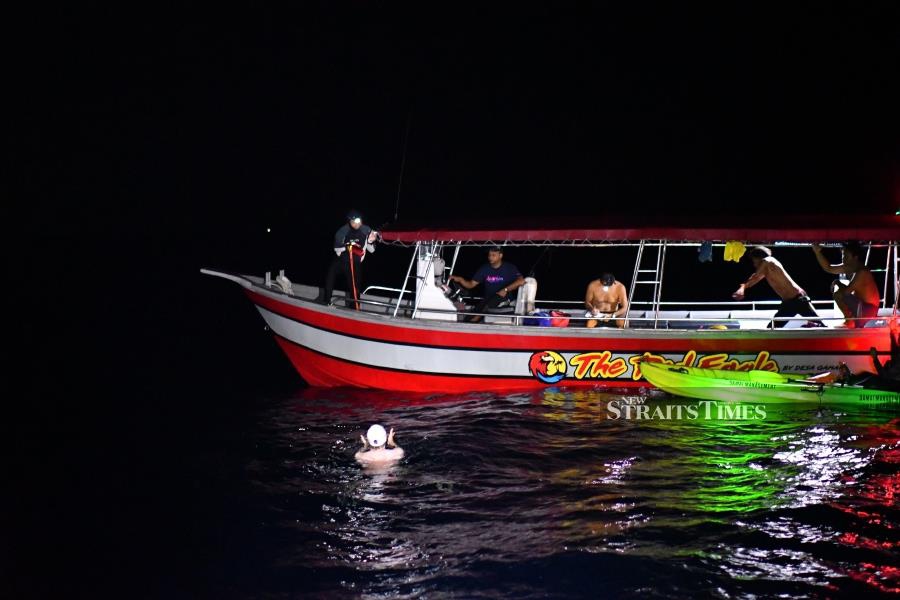
There was nothing remarkable about my diet. I live with my parents and ate whatever our helper or sister cooked at home. I'm a small eater and I didn't eat as much as most people would when training for a marathon swim.
As for sleep, Shauqie recommended a minimum of eight hours every night. I didn't know how to tell him I could only get by on four hours as I was taking care of my bedridden father. But then again, for the kind of swimming that I do, I'm supposed to be able to function for very long hours on very little food and sleep.
During the swim proper, my feed consisted of energy bars, bananas and apples, washed down with water, isotonic drinks and a bit of my favourite Chek Hup Ipoh White Coffee.
SALTY PROBLEM
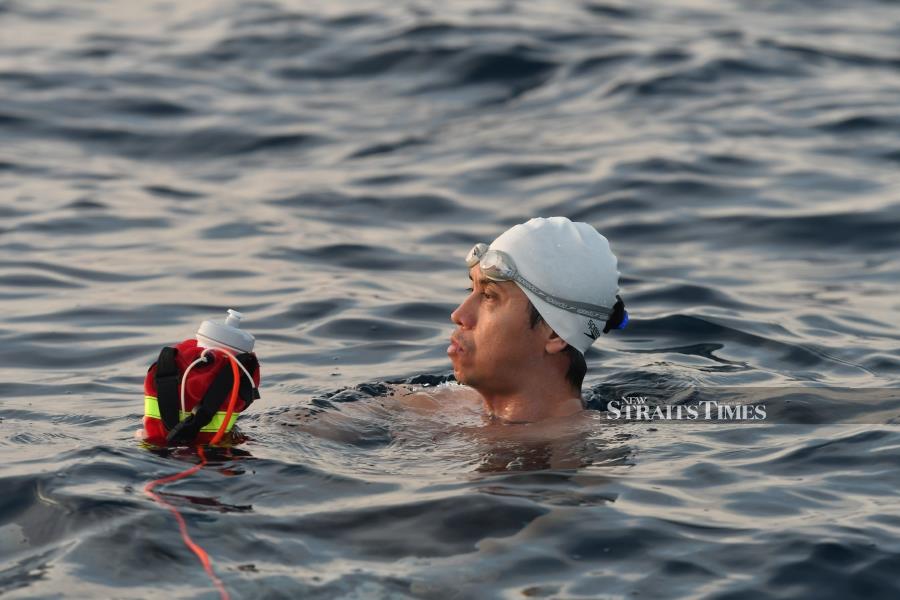
One of the biggest problems from last year was salty mouth — a buildup of salt on the tongue, lips and throat due to prolonged submersion in seawater. It caused me to lose my sense of taste and made my feeding breaks a drudgery.
This year, my team and I devised a plan to tackle this salty mouth problem: mouthwash for me to gargle with and canned peaches for me to consume along the way. There was no way to test this solution as you need to submerge in seawater long enough. Nevertheless, it worked. I could somewhat enjoy my feeding throughout the swim.
The full effect of salty mouth didn't manifest until after the swim. I couldn't eat or speak properly for 12 hours. Even drinking water was painful. But by then, I was already a happy man.
CHANGE IN EXECUTION

Unlike last year, this time we didn't set any particular landing point. On swim day, we just roughly made the Penarik Mosque as our point, but in practicality, we expected to land anywhere along the beach between Penarik and Merang.
We changed course as and when the team felt it was necessary, based on the changing conditions of the sea. There was a point during this mission when it threatened to fail a second time. It came at around 8km to 10km from the mainland.
The sun was at its hottest and the current was working against me. Every time I stopped to feed, I got pushed back towards the sea. I'd been battling the choppy sea and winds all night and all morning, and didn't know how long I could sustain this Herculean effort.
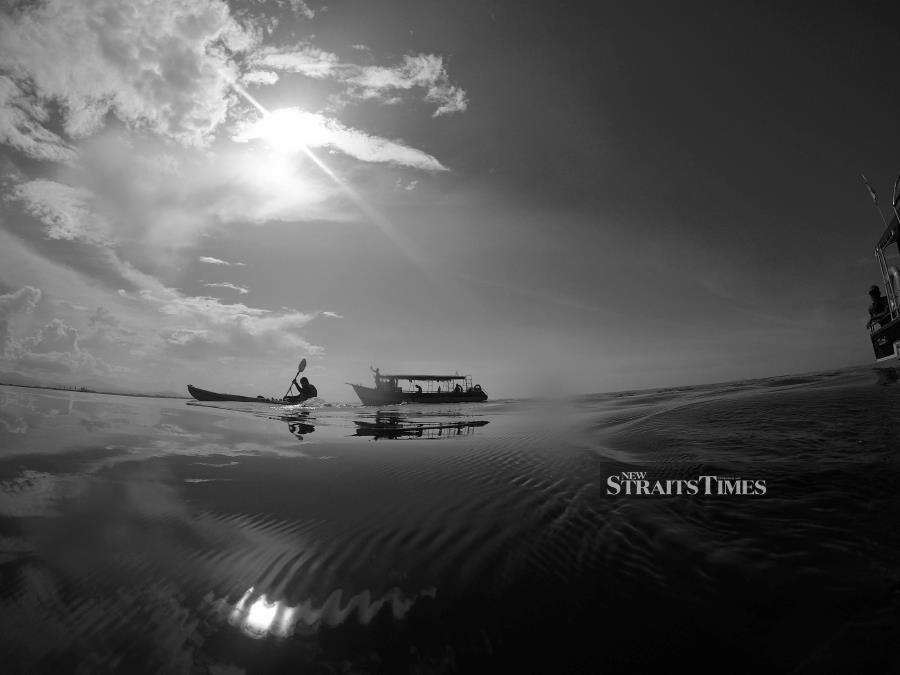
I felt I deserved a break, but never shared my doubts with the team. I'm sure they sensed it anyway. The problem was, I couldn't find a valid reason to end the swim. My body, breathing and heart rate were normal, so I couldn't tell my team I was exhausted.
In that critical moment, I decided I wasn't going to let them down a second time. When I finally told them I was going to press ahead even if it meant reaching shore at night, they cheered. That gave me the extra strength I needed.

I was also driven to succeed this time for the sake of our new collaborators. In the weeks leading up to the big swim, I had begun talking to Project Life Aquatic, a group in Selangor that helps people overcome their fear of deep waters. Discovering the project delighted me to no end because I had been fighting for a similar cause. It felt like meeting a kindred spirit.
I also reached out to Universiti Malaysia Terengganu's Institute of Oceanography and Environment to obtain marine data and advice for this Redang Channel swim and beyond. Suffice to say, I wanted to return safely and meet my partners with a success story. This has been such a sweet achievement.
TERENGGANU FOUR SWIMS

The Redang Channel Solo Swim 2023 is part of an ambitious project by me and my team to pioneer a cluster of marathon swims that we call the Terengganu Four Swims. The cluster comprises swimming from Pulau Perhentian to the mainland (17km), Pulau Redang to the mainland (25km), Pulau Perhentian to Pulau Lang Tengah (19km), and Pulau Redang to Pulau Lang Tengah (10km).
I conceived the Terengganu Four Swims idea in 2021, after completing my first pioneering swim (Pulau Perhentian to the mainland).
Originally, my thinking was only confined to Pulau Perhentian. I wanted to do the crossing and commemorate the achievement with photos, videos and media coverage. That's why our website and Facebook page are called the Perhentian Channel Swim.
But I soon realised that the other resort islands in Terengganu are equally suited for marathon swims, at least where distance is concerned. This has the potential to attract serious marathon swimmers from all over the world.
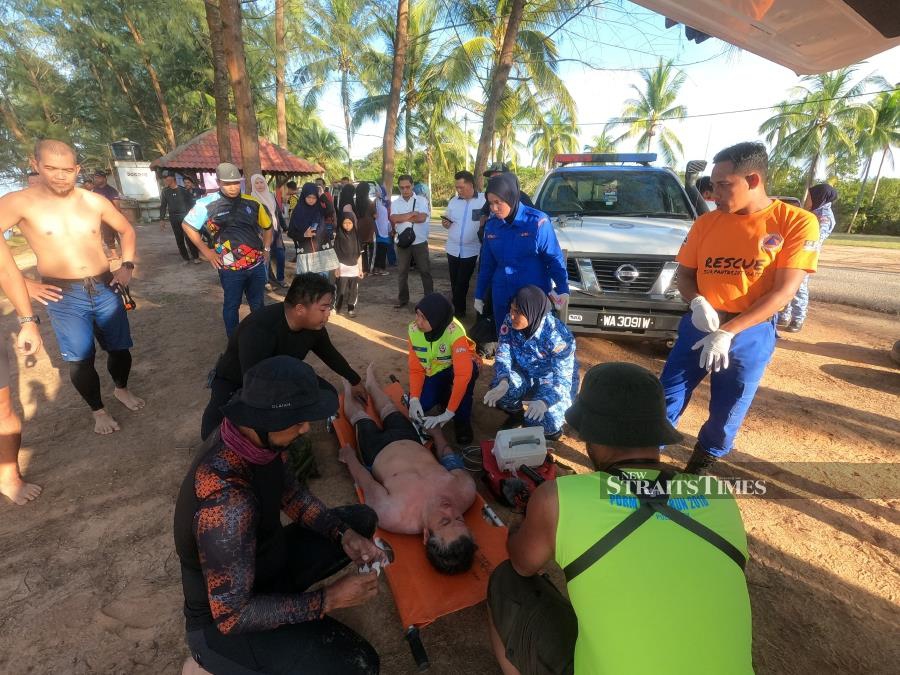
In order to attract serious swimmers, we needed to set a high standard. I like to challenge anyone looking to do the Terengganu Four Swims to make their endeavours "non-stop" and "unassisted". Here's what I mean by those terms:
Non-stop: the swimmer remains in water for the entire duration of the swim and refrains from making physical contact with escort vessels, support personnel or other objects (fixed or floating).
Unassisted: the swimmer doesn't receive artificial assistance for performance or buoyancy, and only uses standard equipment of the sport, such as goggles, swim cap and textile swimwear. A swim that involves the use of a tow float is considered an assisted swim.
This isn't some arbitrary standard that I invented. It's an internationally accepted set of guidelines for undertaking an open-water marathon swim in any body of water. It's time we in Malaysia adopt it too.
Now that our team has completed the Redang Channel Solo Swim 2023, our confidence has grown. We're now highly motivated to tackle the remaining two swims in the series. Wish us luck!

THE DREAM TEAM
The Redang Channel Solo Swim 2023 team members comprised boat crew Mohd Nazuan Azharrudin, photographer Ariff Budiman Abdul Halim, elad observer Shamsul Hamimi Ab Rahman, lifesaver and medic Muhammad Fajrul Hazreen Zainal, swimmer Ridzwan Rahim, drone videographer Mohd Fahmi Zainal Aripin, observer Tsuyoshi Amzar Sawada, kayaker Mohd Hafizuddin Amlin, and team leader and chief feeder Mohd Faiz Mat Isa.


